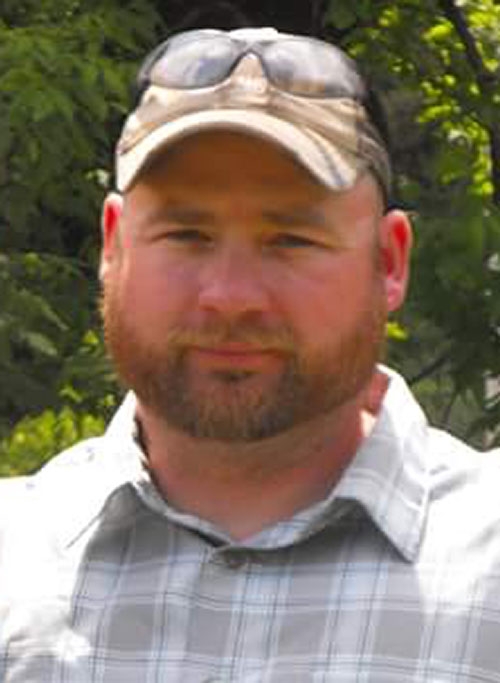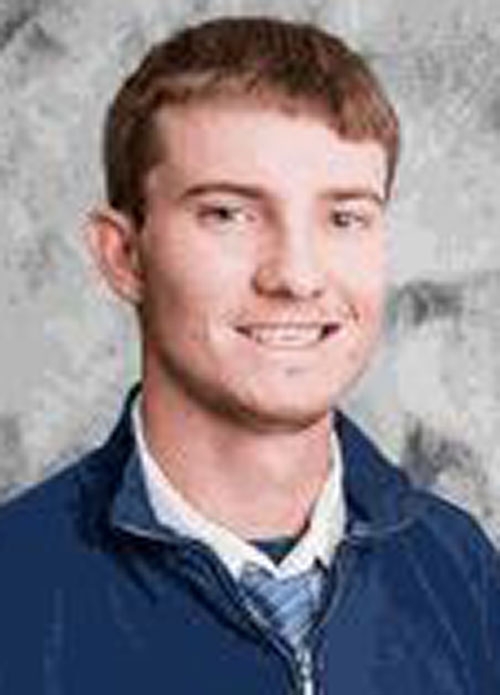You are here
Home ›First-ever combined city/school election seems to serve its purpose in improving voter turnout

Waukon Mayor Pat Stone

Lansing Mayor Kyle Walleser
Stone, Ellingson retain Waukon seats; Walleser is new Lansing Mayor; EACSD District 2 decided by just one vote
The first-ever combined city/school election was held throughout the state of Iowa Tuesday, November 5 as a means to try and improve voter turnout for such elections. Those efforts appeared to have served their purpose, as proven in some of the numbers locally in ballots cast by Allamakee County voters, with those numbers ultimately resulting in the return of all but possibly one incumbent candidate by local voters to their respective seats at the head of city government and/or local school boards, as described in detail throughout this article.
“Overall, I’m pleased with how the first city/school elections went across the state,” Iowa Secretary of State Paul Pate said in a released statement. “As Iowa’s voter registration totals continue to soar, I believe turnout in these important local elections will follow that trend and Tuesday was a step in the right direction.”
Although a first-ever combined city/school election obviously does not allow for much in the way of comparisons to previous such elections, some comparisons can be made that provide evidence of the effectiveness of this year’s combined election attempt - although the number and type of contested races can also factor into such statistical comparisons. Although the percentage of eligible voters casting a ballot this year, 21.88%, is similar to the last city election of 2017, where 21.95% of voters exercised their vote, this year’s voter turnout percentage nearly tripled the historically single-digit percentages of most recent local school elections typically held in September.
Although similar in percentages, this year’s combined election was obviously drawing from a larger pool of voters, as far as city elections are concerned, and thus resulted in more voters overall. An example of that is evident in the City of Waukon mayor’s race, where nearly 1,000 voters (992) cast their choice for mayor, more than a third again as many voters as had cast a ballot in the previous Mayor of Waukon race in 2017 (735 votes) and more than double than that of the mayor’s race in 2015 (451 votes).
“As I understand, one of the goals of the legislation to combine the elections was to increase voter turnout,” Allamakee County Auditor and Commissioner of Elections Denise Beyer shared. “Turnout for school elections in the past has often been less than 10%. Turnout for city elections in the past has been a little higher but still less than 15%, depending if a city had a contested race or a public measure on the ballot. With the combination of the two elections, I am hearing a consensus from auditors across the state - turnout was either similar or higher. In places where it was higher this year, it was due to contested races and/or public measures on the ballots. I would have to agree that in Allamakee the near 22% turnout can be attributed to the contested mayor races in Waukon and Lansing, and also contested school board races in Allamakee and Eastern Allamakee School Districts.”
FUNDING MEASURES
In addition to the city government and school board races on this year’s combined ballots, a trio of funding measures were also decided by certain Allamakee County voters, with all three of those funding measures being passed by nearly two-thirds or more of the majority. Although it was the broadest measure, covering all of rural Allamakee County, Measure “AO” - the implementation of a seven percent hotel/motel tax paid by visitors who stay in such rural lodging facilities in Allamakee County - involved the least amount of voters of those three measures, but still passed by a nearly 70% margin after receiving 282 “yes” votes (69.46%) against just 124 “no” votes (30.54%).
Voters in the Allamakee Community School District also passed two funding measures placed in front of them by margins hovering just below and well above two-thirds of more than 1,200 voters who cast such a ballot. The measures were included in this year’s school election in an effort to save time and expense of a special election to approve them in the future, closer to expiration deadlines.
Measure “AM,” the extension of the Allamakee Community School District’s existing Physical Plant and Equipment Levy at its current rates, was approved by a margin of 777 “yes” votes (63.43%) to 448 “no” votes (36.57%). Likewise, Measure “AN,” the revamped Revenue Purpose Statement allowing for the State of Iowa’s Secure an Advanced Vision for Education (SAVE) funding recently extended by the State Legislature to be used for school safety measures in addition to its originally intended purposes, was also passed by a considerable margin of 927 “yes” votes (75.98%) to just 293 “no” votes (24.02%).
STONE, ELLINGSON RETAIN WAUKON CITY GOVERNMENT SEATS
In that previously mentioned Mayor of Waukon race that yielded just shy of 1,000 total votes, incumbent Pat Stone was re-elected to his second two-year term with 550 votes (55.28%) over challenger and Waukon City Council Third Ward representative Arvid Hatlan, who received 442 votes (44.42%). Hatlan will return to his Ward 3 council seat for the remaining half of his four-year term. Although nearly even in absentee votes (90-88 in Stone’s favor), the incumbent mayor held at least a 30-vote margin in all three of the city’s voting wards.
The other contested Waukon city government race saw incumbent At-Large City Councilman John Ellingson also retain his seat, racking up 624 votes (65.20%) in comparison to challenger Scott Panos and his 331 votes (34.59%). The other Waukon City Council seat up for re-election saw Ward 2 unopposed incumbent John Lydon returned to that seat with 279 votes. The only other City of Waukon ballot item also saw three incumbents on the Veterans Memorial Hospital Board of Trustees all retain their seats without opposition, including Matt Goltz (775 votes), Dennis Lyons (748 votes) and Kevin Hanson (687 votes).
WALLESER IS NEW LANSING MAYOR
The City of Lansing will be headed by a new mayor, as current mayor Mike Brennan opted not to seek re-election this year. Lansing voters overwhelmingly placed Kyle Walleser in that mayoral seat with more than 80% of the votes cast, 237 (80.61%), in comparison to William Burke, who received 55 votes (18.71%). Walleser was currently serving on the Lansing City Council, and will now have his open council seat filled by write-in candidate Curtis Snitker, who previously served on the council but had earlier resigned due to an anticipated change in residence that has since not happened. Snitker received 69 out of 100 write-in votes and will assume his new city council seat immediately. In that same election for the second of two Lansing City Council seats on this year’s ballot, unopposed incumbent Bruce Revoir was re-elected with 226 votes after having been earlier appointed to Snitker’s seat.
WRITE-IN CANDIDATE ELECTED TO NEW ALBIN CITY COUNCIL
In the only other contested city government race within the county, four declared candidates were vying for just three seats on the New Albin City Council, but a write-in candidate ended up figuring into the mix as well. Alexie Grotegut was the lone declared incumbent within those three seats on the ballot, and she was returned by voters with 78 votes (28.21%).
Joining Grotegut on the council will be declared candidate Alberto Whitlatch, who received 114 votes (29.53%). Incumbent but write-in candidate Dale “Frog” Mauss ended up receiving 108 votes (27.98%) despite not having his name on the ballot. Another declared pair of candidates both ended up missing out on election to the council because of Mauss’ write-in vote total, as Elizabeth Ristey received 45 votes (11.66%) and Anna K. Fee received 41 votes (11.62%).
New Albin voters also returned unopposed incumbent mayor Josh Dreps to his leadership seat with 136 votes. Likewise, New Albin voters also returned unopposed incumbent city treasurer Diane Erbe to her position with 142 votes.
OTHER LOCAL CITY RACES
Voters in both Waterville and Harpers Ferry had a number of city government seats to fill, but a number of candidates equal to those elected positions. Waterville voters returned unopposed incumbent mayor Dave Monserud to that office with 21 votes, and also filled five city council seats with Jaclyn Hilleshiem (23 votes), Robbie Burrett (21 votes), David Christianson (18 votes), Jeff Mitchell (18 votes) and Jodi Van Iten (16 votes).
Although there was no incumbent candidate for Harpers Ferry Mayor, voters there returned a familiar face to that position, as former mayor Jerry Valley was once again seeking the office unopposed and received 79 votes. The Harpers Ferry City Council had three seats up for election which were easily filled by the three declared candidates on the ballot, including Sandi Riha (82 votes), Daren Kaeppel (78 votes) and Tom Diggins (68 votes).
SCHOOL BOARDS RUN SPECTRUM OF FINAL MARGINS
Both the Allamakee Community School District (ACSD) and Eastern Allamakee Community School District (EACSD) each had three seats up for election this year. Two of the ACSD races featured unopposed candidates, including District 2, where incumbent Erik Helgerson was re-elected with 1,173 votes, and District 4, where newcomer Brent Beyer was seeking to fill that seat vacated by Tim Waters not seeking re-election, with Beyer receiving 1,150 votes to earn that position.
In the lone contested race in the Allamakee Community School District Board election, District 3 incumbent Beth Shafer garnered 1,076 votes (83.35%) to win re-election over challenger Tony Smith and his 212 votes (16.42%). Shafer had recently been appointed to that District 3 seat following the resignation of long-time board member Patty Nordheim.
The Eastern Allamakee Community School District featured an opposite situation, with two of three seats featuring contested races. The lone seat not to feature opposition was the At-Large position currently held by incumbent Kelli Mudderman, who was re-elected by voters with 507 votes.
District 1 of the EACSD Board of Directors saw incumbent Bobbie Goetzinger re-elected to that position with 305 votes (55.05%), edging out challenger Stacie Strong, who received 248 votes (44.77%).
In the undoubtedly closest race of the entire election in Allamakee County, the District 2 seat on that EACSD Board came down to a single vote - at least in the unofficial results yet to be canvassed by the Allamakee County Board of Supervisors. By that narrowest of margins, incumbent Bruce Palmborg and his 200 votes (34.72%) was edged out of his seat by one of two challengers, Tony Becker and his 201 votes (34.90%). Additional challenger Krista Rasque received 175 votes (30.38%).
Palmborg will have three days following the official canvassing of the election by the Allamakee County Board of Supervisors to request a recount of those EACSD District 2 votes, if he so chooses, according to Allamakee County Auditor and Commissioner of Elections Denise Beyer. That canvassing was scheduled to take place Tuesday afternoon, November 12.
According to a breakdown of precincts in that EACSD District 2 race, Palmborg held more than a 50-vote edge over Becker, 143-91, in Precinct 7, which included the City of Lansing, along with Center, Lafayette and Taylor townships. Becker made up most of that ground with a 102-53 margin in Precinct 8, which included the City of New Albin and Union City and Iowa township voters, with Becker also gaining a three-vote edge, 6-3, in absentee voting and being the lone vote-getter - just one fateful vote - out of Precinct 6, which includes the portion of the EACSD that lies within the City of Harpers Ferry, along with Fairview and Taylor Townships. Both Palmborg and Becker each received a single vote out of entirely rural Precinct 2.

